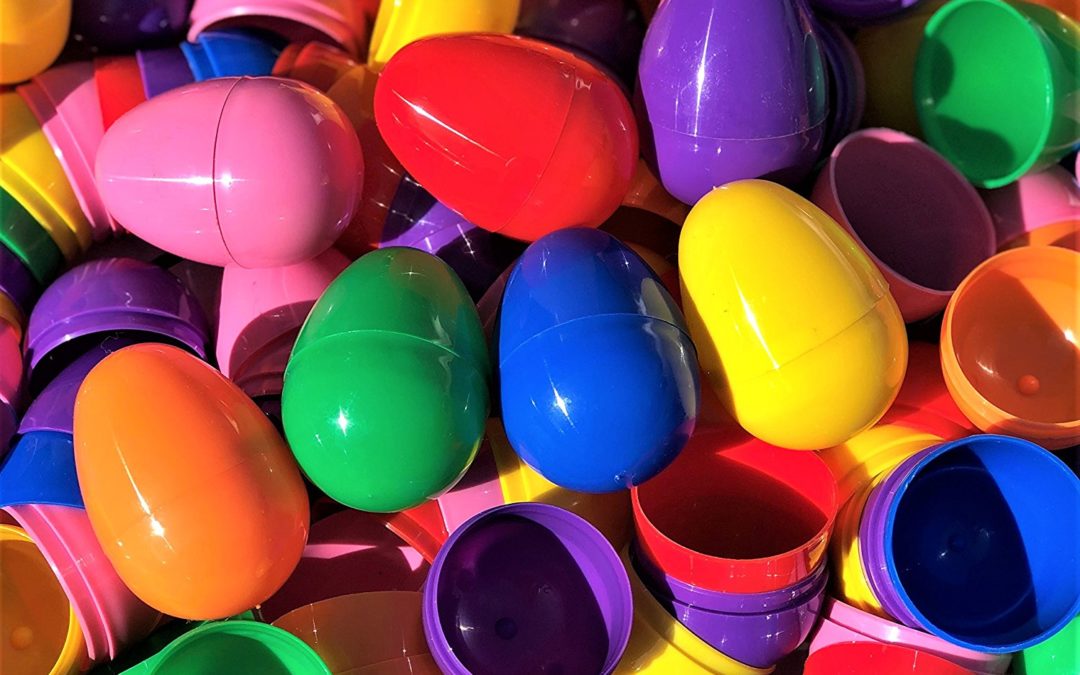1. Kids love hide and seek.
One of the best ways to engage most young children in play is to start up a game of hide-and-seek. For a child who’s never played, you may need to teach the skills of keeping the eyes covered, counting to ten, or walking around to look for the eggs. Once they get the hang of it, it can provide endless entertainment. It’s a great way to work on waiting, turn-taking, and simple back-and-forth game play.
2. There are so many colors and designs.
Children can use language to choose which eggs to hide. “Let’s do all the green eggs.” “Now let’s do two yellow eggs with Lightning McQueen on them.”
3. You can put whatever you want to inside!
Candy is a classic, and always a hit, but “think outside the egg.” Does your child need help with learning animal names? Try adding a small plastic animal to each one. Is your child learning colors? Have them help you match a colored circle, colored paper clip, or colored jelly bean into each egg. When working on specific speech sounds, you can also use simple objects or pictures that go along with those sounds.
4. There are endless hiding places.
Does your child need help with learning locations? Hide the eggs inside, then outside. Put them under the chairs and tables. Put them on top of the desk or couch. Hide the eggs in the bedroom, or kitchen, or bathroom.
Take advantage of the holiday sales this time of year, and buy a bag or two of plastic eggs to have fun playing, and learning, with your child.
Blog post by Kelly Goad, MA, CCC-SLP


0 Comments